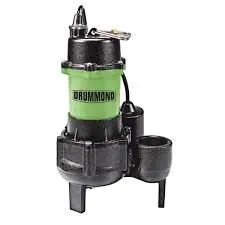English
- Afrikaans
- Albanian
- Amharic
- Arabic
- Armenian
- Azerbaijani
- Basque
- Belarusian
- Bengali
- Bosnian
- Bulgarian
- Catalan
- Cebuano
- Corsican
- Croatian
- Czech
- Danish
- Dutch
- English
- Esperanto
- Estonian
- Finnish
- French
- Frisian
- Galician
- Georgian
- German
- Greek
- Gujarati
- Haitian Creole
- hausa
- hawaiian
- Hebrew
- Hindi
- Miao
- Hungarian
- Icelandic
- igbo
- Indonesian
- irish
- Italian
- Japanese
- Javanese
- Kannada
- kazakh
- Khmer
- Rwandese
- Korean
- Kurdish
- Kyrgyz
- Lao
- Latin
- Latvian
- Lithuanian
- Luxembourgish
- Macedonian
- Malgashi
- Malay
- Malayalam
- Maltese
- Maori
- Marathi
- Mongolian
- Myanmar
- Nepali
- Norwegian
- Norwegian
- Occitan
- Pashto
- Persian
- Polish
- Portuguese
- Punjabi
- Romanian
- Russian
- Samoan
- Scottish Gaelic
- Serbian
- Sesotho
- Shona
- Sindhi
- Sinhala
- Slovak
- Slovenian
- Somali
- Spanish
- Sundanese
- Swahili
- Swedish
- Tagalog
- Tajik
- Tamil
- Tatar
- Telugu
- Thai
- Turkish
- Turkmen
- Ukrainian
- Urdu
- Uighur
- Uzbek
- Vietnamese
- Welsh
- Bantu
- Yiddish
- Yoruba
- Zulu
Telephone: +86 13120555503
Email: frank@cypump.com
Nov . 21, 2024 22:11 Back to list
slurry pump gland seal water
Understanding Slurry Pump Gland Seal Water Importance and Functionality
In the field of fluid handling, particularly when it comes to the transportation of slurries, the equipment used plays a vital role in ensuring efficient and reliable operation. Among this equipment, slurry pumps are fundamental for moving abrasive and viscous fluids, often found in industries such as mining, wastewater treatment, and chemical processing. A critical component of these pumps is the gland seal, which employs water to protect against leaks and maintain operational integrity.
What is a Gland Seal?
A gland seal is a sealing mechanism around the shaft of a pump that prevents the liquid being pumped from leaking out into the environment. In slurry pumps, this is especially significant due to the potentially harmful and abrasive nature of the materials being moved. The gland seal consists of a packing material or mechanical seal that provides a tight fit around the shaft. This seal needs to operate effectively even under high pressure, temperature, and, importantly, with corrosive and abrasive slurries.
The Role of Seal Water in Gland Seals
One of the key factors in ensuring that a gland seal operates efficiently is the application of water – often referred to as seal water – which serves multiple purposes
1. Lubrication Seal water acts as a lubricant for the gland packing or mechanical seal. This reduces friction between the moving parts, which is crucial particularly in abrasive environments. Without adequate lubrication, the seal can wear out quickly, leading to leakage and costly repairs.
2. Cooling The pumping of slurries can generate significant heat, especially when the pump operates under heavy loads or if the slurry has a high viscosity. The introduction of seal water helps to dissipate this heat, preventing overheating and ensuring the longevity of the seal and surrounding components.
3. Leak Prevention Seal water creates a barrier that helps to suppress leaks. By maintaining a slight pressure in the seal area, it prevents the ingress of solids and gases, which could otherwise cause wear and potential failure of the sealing surface.
slurry pump gland seal water

4. Cleaning In environments where abrasive materials are being pumped, the seal area can get contaminated with solid particles. The continuous flow of seal water helps to flush away these solids, maintaining a cleaner environment for the seal and reducing the risk of damage caused by abrasive wear.
Optimal Seal Water Management
While the use of seal water is crucial, it is equally important to manage it effectively to maximize its benefits. Here are some best practices for seal water management
- Water Quality Ensure that the seal water is free from significant impurities and solids. Contaminated water can exacerbate seal wear, leading to premature failure.
- Flow Rate The correct flow rate of seal water is critical. Too little water can lead to insufficient lubrication and cooling, while too much can create unnecessary waste and pressure issues. Finding the right balance is essential for optimal performance.
- Monitoring Regularly check the seal water system for leaks, blockages, and adequate flow. Continuous monitoring can help detect problems before they escalate into more significant issues, avoiding downtime and costly repairs.
- System Design Ensure that the seal water system is designed to cater to the specific operational conditions of the slurry pump. This includes the type of slurry being handled, operating pressure, and temperature.
Conclusion
In summary, the gland seal water in slurry pumps plays an irreplaceable role in maintaining the operational integrity of the equipment. By providing lubrication, cooling, leak prevention, and cleaning, seal water ensures that slurry pumps can function effectively in challenging environments. Proper management of seal water not only prolongs the life of the gland seal but also enhances the overall efficiency and reliability of the slurry pumping system. Understanding and implementing best practices in seal water application can lead to significant improvements in operational performance, ultimately benefitting the entire industrial process.
-
ISG Series Vertical Pipeline Pump - Chi Yuan Pumps Co., LTD.|Advanced Hydraulic Design&Energy-Efficient Solutions
NewsJul.30,2025
-
ISG Series Vertical Pipeline Pump - Chi Yuan Pumps Co., LTD.
NewsJul.30,2025
-
ISG Series Vertical Pipeline Pump - Chi Yuan Pumps Co., LTD.|energy-efficient fluid handling&industrial durability
NewsJul.30,2025
-
ISG Series Vertical Pipeline Pump - Chi Yuan Pumps | Advanced Engineering&Industrial Efficiency
NewsJul.30,2025
-
ISG Series Pipeline Pump - Chi Yuan Pumps | High Efficiency, Energy Saving
NewsJul.30,2025
-
ISG Series Vertical Pipeline Pump-Chi Yuan Pumps|High Efficiency&Reliable Performance
NewsJul.29,2025










